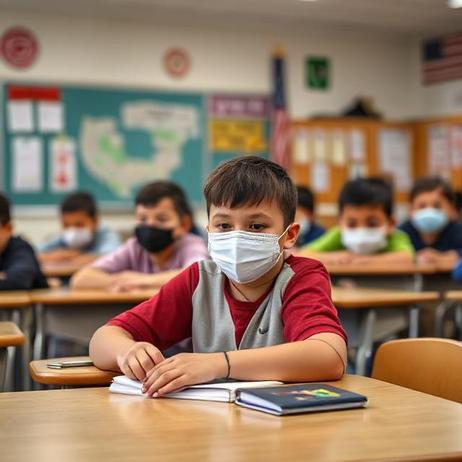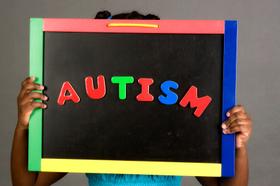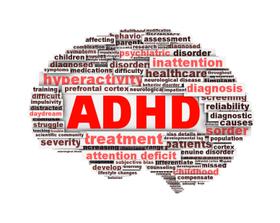COVID-19’s Lasting Impact on U.S. Public Schools (2025)
The COVID-19 pandemic may no longer dominate headlines, but its imprint on U.S. public schools remains significant in 2025. What once looked like a temporary disruption has evolved into a long tail of academic deficits, enrollment shifts, staffing stress, psychological strains, and equity challenges. In this updated analysis, we revisit how COVID-19’s lasting impact on U.S. public schools continues to ripple through the system, drawing on new data, district examples, and expert insight.
1. Lingering Academic Recovery and Learning Loss
Despite efforts to “catch up,” many districts report that students remain behind where pre-pandemic cohorts once stood. According to research from UC Davis, as of spring 2024, California students lagged roughly half a grade level behind their 2019 peers in core subjects. The learning gap is not uniform: lower-income, rural, and non-White students have tended to recover more slowly, intensifying educational inequities.
A 2025 Harvard analysis notes that national test performance has not rebounded to pre-COVID norms, especially in mathematics and reading, with enduring declines in key states. Moreover, the Education Recovery Scorecard shows that while some districts have surpassed pre-pandemic levels in both math and reading, no state has fully done so.
In practice, districts like Toledo, Ohio, have extended school days, added summer academies, and leveraged small-group tutoring to accelerate recovery. Yet even well-resourced districts caution that extra supports may need persistence through 2027 to erase deficits.
2. Enrollment Erosion and Discipline of Choice
Public school enrollment has not rebounded to pre-pandemic levels. Since 2020, U.S. public school systems have lost approximately 1.28 million students—nearly 2.5% of their base. Reason Foundation+1 In 2024, 39 states saw additional declines in enrollment. The Stateline report shows that 18 states experienced more than 4% declines in fall 2023 enrollment compared with prior years, with ten states exceeding 5%.
Massachusetts offers a microcosm of the larger trend: relative to pre-pandemic projections, public enrollment is down ~2% in 2024, while private school enrollment is up ~14% and homeschooling up ~45%. The shift is especially acute in higher-income districts, where families more readily pivoted to private or hybrid schooling.
These patterns exert budget pressures on districts, reshape class sizes, and intensify debates over school funding, choice policies, and charter expansion.
3. Staffing Strain and Teacher Retention
The pandemic exacerbated existing staffing challenges. Teacher shortages, already a concern pre-2020, deepened as veteran educators retired early and fewer new candidates entered the profession. In a 2025 Brown Center reflection, analysts note that COVID-era stress, burnout, and political conflict over curricula have undermined retention and morale.
Many districts now operate with higher teacher-to-student ratios, greater reliance on long-term substitutes, and less capacity for differentiated instruction. Rural and high-poverty districts often struggle most. The NEA’s Rankings and Estimates 2025 report cautions that districts must navigate this staffing crunch even as pandemic-relief funding phases out.
The phasing out of ESSER (Elementary and Secondary School Emergency Relief) funds looms as a tension point: though a judge blocked the cancellation of over $1.1 billion in unspent funds, the broader wind-down of COVID-era federal aid is underway. Reuters
4. Chronic Absenteeism and Student Engagement
One of the clearest markers of COVID’s enduring toll is chronic absenteeism (missing 10% or more of school days). Though rates have improved since pandemic peaks, many urban districts still report 30% or more of students as chronically absent during 2024–25.
This lost seat time compounds academic deficits, depresses motivation, and foreshadows higher dropout risk. UC Davis researchers identified a threefold jump in chronic absenteeism among California students post-2020, followed by only partial recovery. In districts from Detroit to Phoenix, absenteeism correlates with transportation gaps, health challenges, and disengagement—forces exacerbated by the pandemic.
In response, schools are blending attendance interventions, wellness outreach, and partner-based wraparound support. Philadelphia’s district now deploys case managers to reach chronically absent students via home visits and social services coordination.
5. Mental Health, Social-Emotional Development, and Equity
The pandemic disrupted more than academics. Prolonged isolation, uncertainty, and trauma tilted many students toward social-emotional distress. According to the CDC, in 2023, nearly 40% of U.S. high schoolers reported persistent feelings of sadness or hopelessness, and 20% noted unmet mental health care needs.
Schools increasingly see mental health as integral to recovery. Many public districts now embed therapists, restorative practices, mindfulness curricula, and peer-support programs. In Miami-Dade, for example, public high schools report integrating mental health days, SEL (social-emotional learning) modules, and trauma-informed training for teachers.
Importantly, the burden of mental health challenges has been uneven. Low-income, BIPOC, and LGBTQ+ students often face compounding stressors—economic instability, health disparities, and systemic inequities—magnifying COVID’s psychological impact. Experts highlight the need for culturally relevant support systems and wraparound services to close the emotional divide. research.ucdavis.edu+1
6. Innovation, Technology, and Preparedness
Despite the disruption, COVID-19 accelerated lasting innovation in public schools. Districts that embraced hybrid instruction, digital tools, and remote learning infrastructure now carry forward more flexible models. Some districts offer blended scheduling, virtual electives, or remote recovery options for students who fall behind.
A rising lever in 2025 is Generative AI (GenAI) integration into instruction. Early studies indicate that math and science teachers are beginning to experiment with AI-assisted tutoring, formative assessment, and lesson planning. The institutional support, constraints, and pedagogical balance are actively debated across district leadership. arXiv
Additionally, the Education Recovery Scorecard underscores that over 100 districts have exceeded pre-pandemic performance—a testament to the power of style="text-decoration-line: none;"> Still, underinvestment in technology and broadband access persists in historically underresourced districts, and “digital divides” remain stubborn, particularly in rural and inner-city communities.
7. Policy, Funding, and Long-Term Outlook
As 2025 unfolds, public school systems confront a precarious fiscal horizon. Pandemic-era funding through ESSER and federal stimulus bolstered operating capacities and recovery programs, but those funds are now tapering.The federal government faces lawsuits over the cancellation of unspent COVID funds, underscoring the stakes.
Many districts anticipate deficits, forcing cuts in enrichment programs, custodial staffing, or facility maintenance. Some states are reconsidering school funding formulas, per-pupil allocations, and aid models to stabilize vulnerable districts.
Policymakers continue wrestling with balancing recovery pressures (tutoring, mental health, attendance) against core operating costs (teacher pay, infrastructure, transportation). As COVID’s direct health threats recede, its educational legacy demands long-term commitment.
Experts argue that without sustained interventions through 2028, many students may never fully catch up. For parents, educators, and districts alike, the takeaway is clear: the true cost of COVID-19’s lasting impact on U.S. public schools will be born out over a decade.
Conclusion
In 2025, the shadow of COVID-19 still shapes U.S. public schools in substantive ways. From persistent learning gaps and declining enrollment to teacher shortages, absenteeism, and mental health strains, the system is still wrestling with aftershocks. Yet within the challenge lie catalysts: innovation, a renewed awareness of student well-being, and a political reckoning over the value of public education.
As districts course-correct, the best schools and policymakers will treat this not as a temporary “recovery period,” but as a generational investment in equity, resilience, and reimagined schooling. (For comparative insights into how private boarding schools are evolving in this landscape, see resources at BoardingSchoolReview.com.)
As we watch this transition, one principle holds: restoring excellence in public education will require sustaining intention, not merely returning to “normal.”














